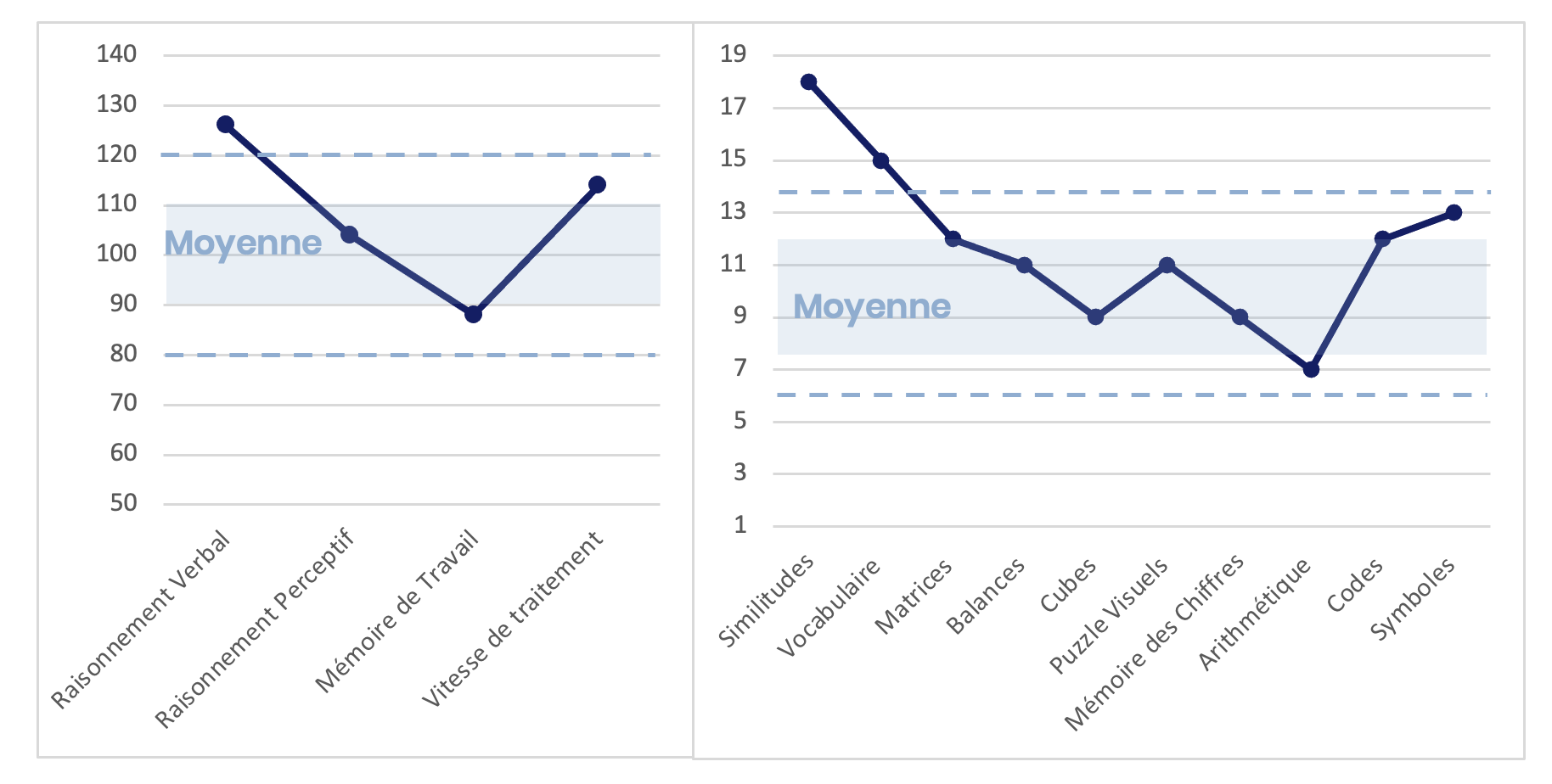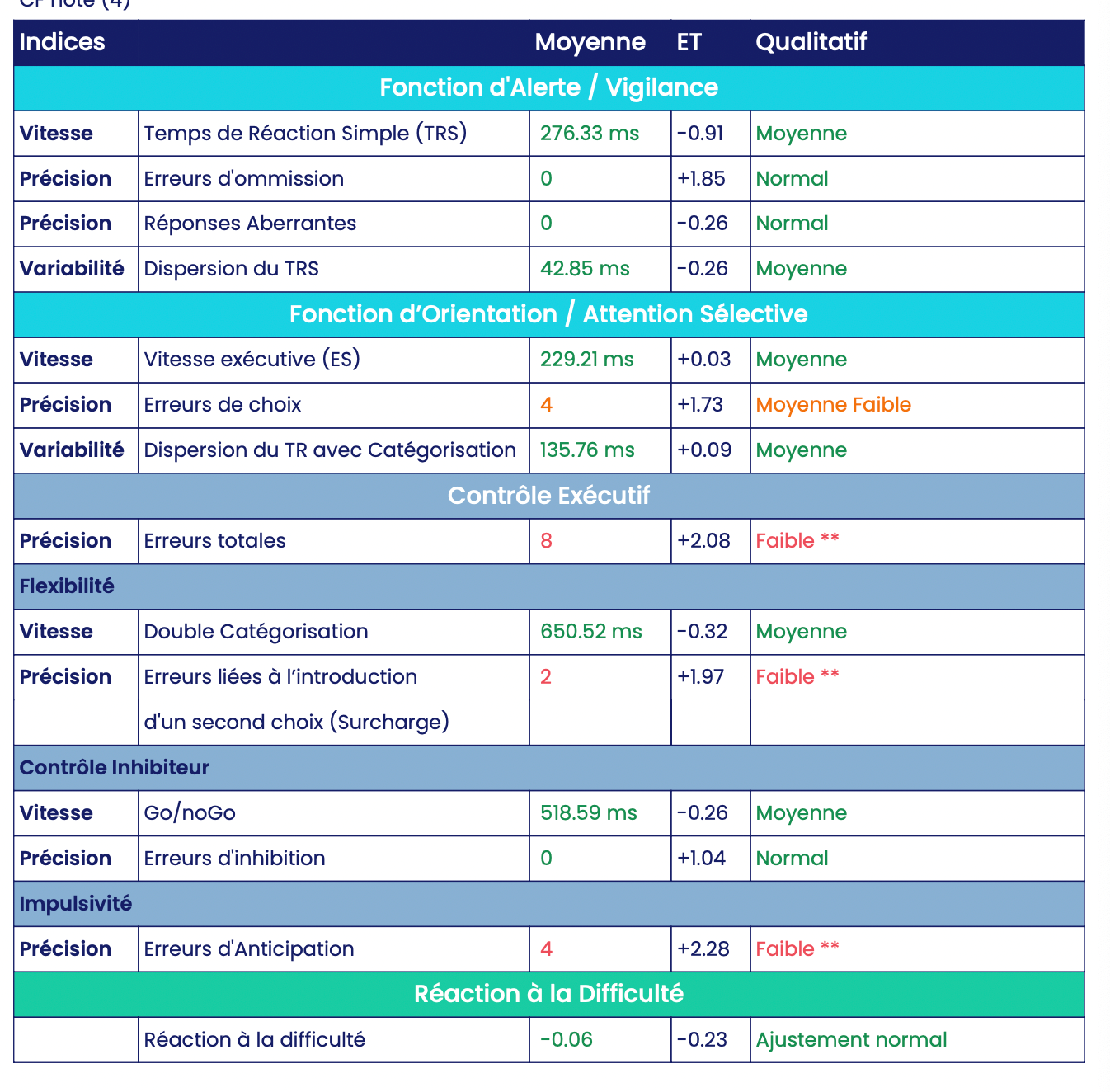Clinical Case : Julia, 13 years old, Suspicion of an ASD
Context : Julia is consulting with regard to social interaction difficulties, present since childhood, and in association with sensory particularities. Julia is in 8thgrade. Learning is satisfactory but her socialization remains limited. Second degree, irony and empathy remain inaccessible. The anamnesis highlights a strong request from Julia, as well as her family, to better understand her cognitive and emotional functioning.
WISC-V


WISC : Cognitive functioning is heterogeneous but of very good quality, from the high average to the upper zone. A strong point is found in the field of visuo-spatial reasoning. Working Memory is Julia's weak point, but remains average.
Test FEA :
Julia presents difficulties of executive control which are amplified in the case of the implementation of cognitive flexibility. The attentional tests remain correct. Social cognition normalizes but appears qualitatively difficult and slowed down.



The MindPulse show that the particularly fast perceptual motor speed is in the average (z=-0.91), just like the executive speed (z=0.03) and the reaction to difficulty (z=-0.23) which does not highlight either over-speed or over -slow-down. Julia however highlights a very high number of errors, which appear in the low zone (z=2.08).
Errors are as well impulsive nature (Anticipated Responses) than executive nature (Errors of Choice). Julia commits two inhibition errors in the second part of the test, which highlight Julia's executive difficulties, and two overload errors linked to the integration of the second variable (living or non-living) in the last part of the ordeal, suggesting an overflow of Julia's executive abilities.
MindPulse response time analysis MindPulse highlights a performance variability that remains within the norm (z=-0.28 for the first part and z=0.09 for the last two parts) but which appears qualitatively slightly choppy, in particular in the third part which involves higher level executive processes and in particular flexibility.
The detailed results show executive difficulties in Julia and are in favor of a slight attentional and executive imbalance, which results here in the drop in precision.

Conclusion : MindPulse vs. Traditional FEA Comparison
- The assessment seems to raise a functioning compatible with the hypothesis of an autism spectrum disorder (ASD) in a patient of good level.
- All the tests and questionnaires highlight a weakness in the attentional and executive sphere.
- The MindPulse makes it possible to specify the nature of these executive difficulties, particularly marked in the field of impulsivity and flexibility, without associated dominant attentional impairment. The speed-precision balance shows a strategy rather in favor of speed to the detriment of precision in this teenager. The MindPulse stands out here by its great consistency with the clinical information found throughout the evaluation.
- Executive disorders being regularly described in association with ASD profiles,the teenager was referred to a referral center.
